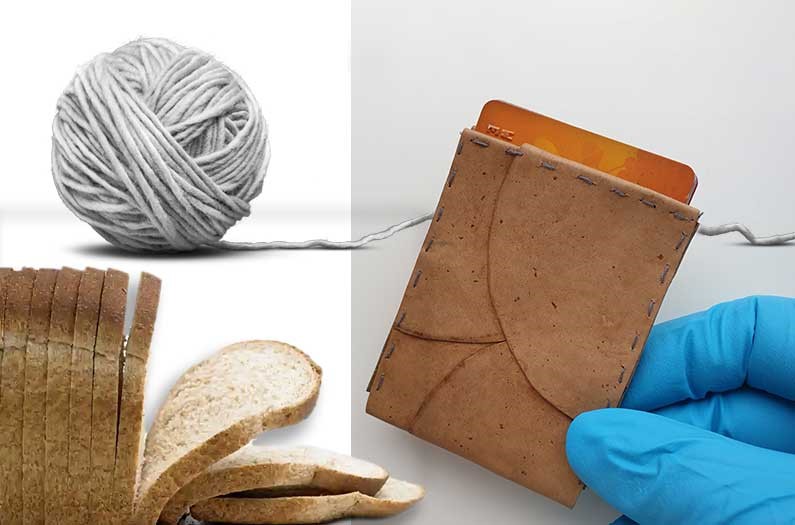
Sustainable leather, yarn and paper—from bread-eating fungi
Researchers describe how they have harnessed a fungus to convert food waste into sustainable faux leather, as well as paper products and cotton substitutes, with properties comparable to the traditional materials. The fungal leather takes less time to produce than existing substitutes already on the market, and, unlike some, is 100% biobased.
To feed the fungus, the team collected unsold supermarket bread, which they dried and ground into breadcrumbs. The researchers mixed the breadcrumbs with water in a pilot-scale reactor and added spores of Rhizopus delemar, which can typically be found on decaying food. As this fungus fed on the bread, it produced microscopic natural fibers made of chitin and chitosan that accumulated in its cell walls. After two days, the scientists collected the cells and removed lipids, proteins and other by-products that could be used in food or feed. The remaining jelly-like residue consisting of the fibrous cell walls was then spun into yarn, which could be used in sutures or wound-healing textiles and perhaps in clothing.
Alternatively, the suspension of fungal cells was laid out flat and dried to make paper- or leather-like materials. Now the group is working on thicker versions consisting of multiple layers to more closely mimic real animal leather. These composites include layers treated with tree-derived tannins—which give softness to the structure—combined with alkali-treated layers that give it strength. Flexibility, strength and glossiness were also improved by treatment with glycerol and a biobased binder.
Their recent tests show the fungal leather has mechanical properties quite comparable to real leather.
The team is working to further refine their fungal products. They also recently began testing other types of food waste, including fruits and vegetables.
 English
English Arabic
Arabic


